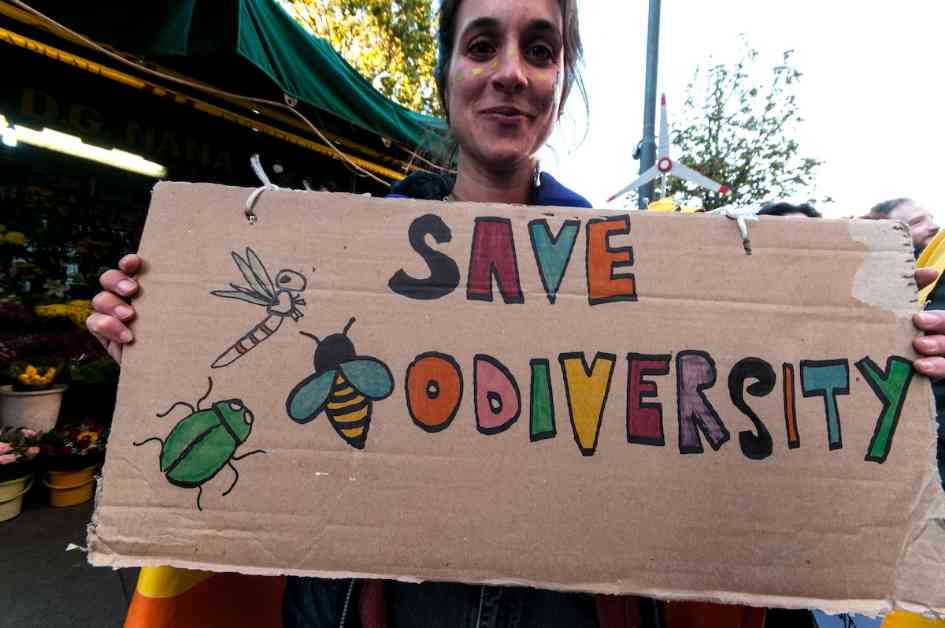Countries from all corners of the globe have converged in Rome this week for the United Nations’ 16th Conference of the Parties to the Convention on Biological Diversity (COP16). Their mission? To devise a strategy that would generate a whopping $200 billion annually for the preservation of the planet’s biodiversity—a monumental task that requires unprecedented cooperation and ambition.
The gathering, which takes place from February 25 to 27, aims to review the progress made by nations in fulfilling their commitments under the Kunming-Montreal Global Biodiversity Framework (KMGBF). Among the ambitious targets set by this framework is the protection of 30 percent of the world’s land and oceans by the end of the decade.
Oscar Soria, co-CEO of The Common Initiative, a non-governmental organization (NGO) think tank specializing in global environmental and economic policy, emphasized the urgency of rising above political tensions to focus on financing biodiversity. In an interview with The Global and Mail, Soria highlighted the historic opportunity at hand, urging nations to embrace ambition and fight for the future with the fervor of gladiators.
The road to COP16 in Rome was paved with challenges, notably stemming from the aftermath of the establishment of the KMGBF in 2022. Last October, countries convened in Cali, Colombia, to deliberate on the financial mechanisms that would support this landmark framework. However, despite the creation of the Cali Fund for collecting profits from nature’s genetic data, negotiators at the inaugural COP16 were unable to reach a consensus on the management and contributors to these funds.
The urgency of the situation is underscored by sobering statistics from the World Wide Fund for Nature (WWF), illustrating a staggering 73 percent decline in the population of vertebrates in the wild since 1970. The commitment made by countries at the conclusion of COP16 in Cali fell significantly short of the sought-after $30 billion per year by 2030, with only $163 million pledged. Amidst these financial shortfalls, the need for transparency in financial contributions to support biodiversity remains a pressing concern.
As the conference unfolds in Rome, one of the main challenges facing delegates is the mobilization of resources, particularly from wealthier nations, to aid their less affluent counterparts. Against the backdrop of a global cost-of-living crisis, the willingness of richer countries to provide financial assistance is waning, posing a formidable obstacle to achieving the targets set by the KMGBF.
While the United States is notably absent from COP16, recent policy shifts under the Trump administration cast a shadow over the willingness of other nations to pledge support and funds for pro-nature policies. Developing nations are adamant that the lion’s share of the financial burden should fall on the Global North, attributing the bulk of the world’s biodiversity loss to companies and countries in wealthier regions. Conversely, European nations and other affluent countries are calling for a more equitable distribution of contributions, including from sovereign wealth funds and growing middle-income nations.
The urgency of securing financial commitments from a range of sources is evident, prompting discussions at COP16 on strategies to redirect the estimated $500 billion spent annually on environmentally harmful subsidies towards nature-friendly initiatives. The question of where to house these raised funds is a matter of contention, with proposals ranging from the establishment of a new fund to utilizing existing mechanisms like the Global Environment Facility (GEF)-run Global Biodiversity Framework Fund.
Despite the complexities and challenges ahead, Kirsten Schuijt, director general of WWF International, underscores the critical importance of constructive dialogues and genuine political will among countries in finding the best path forward on finance. The consequences of biodiversity loss are far-reaching and demand a united front in laying a strong, just, and well-resourced foundation to achieve shared biodiversity goals. The time to act is now, as the road to 2030 must be paved together to avoid the risk of never reaching it at all.














